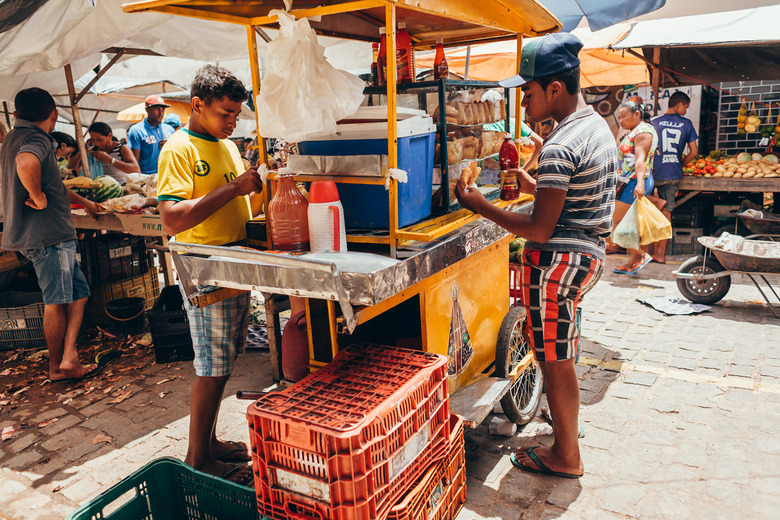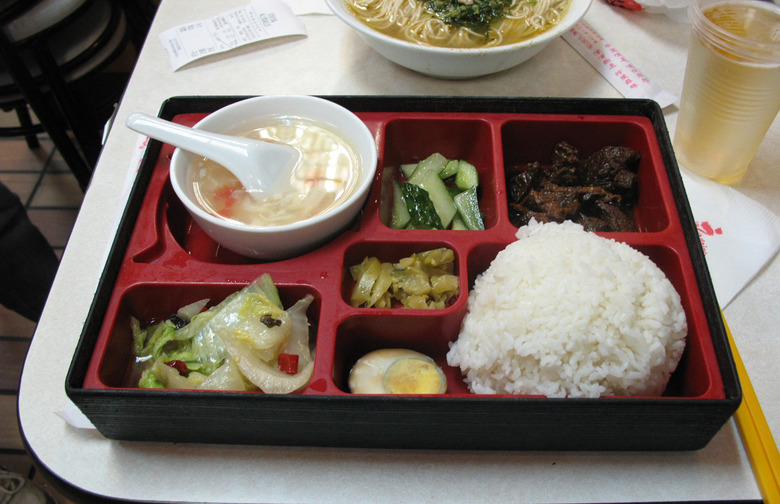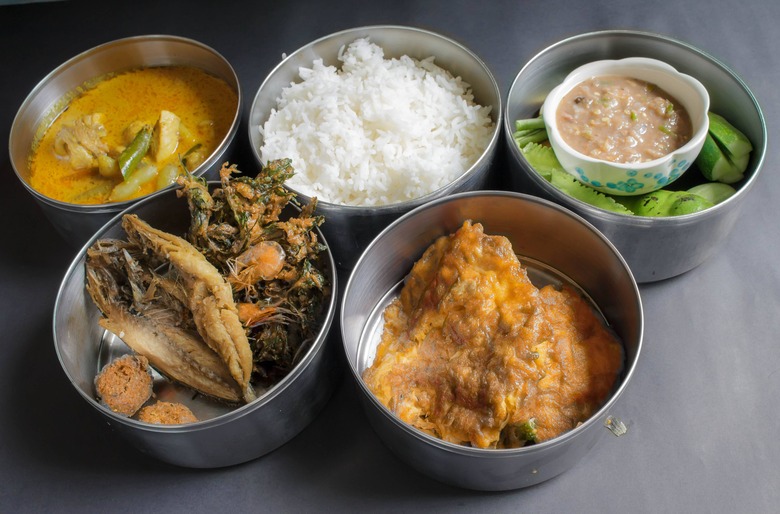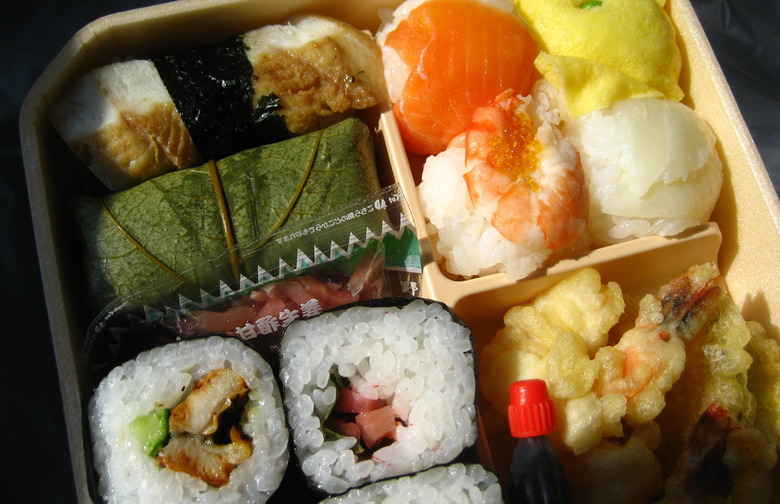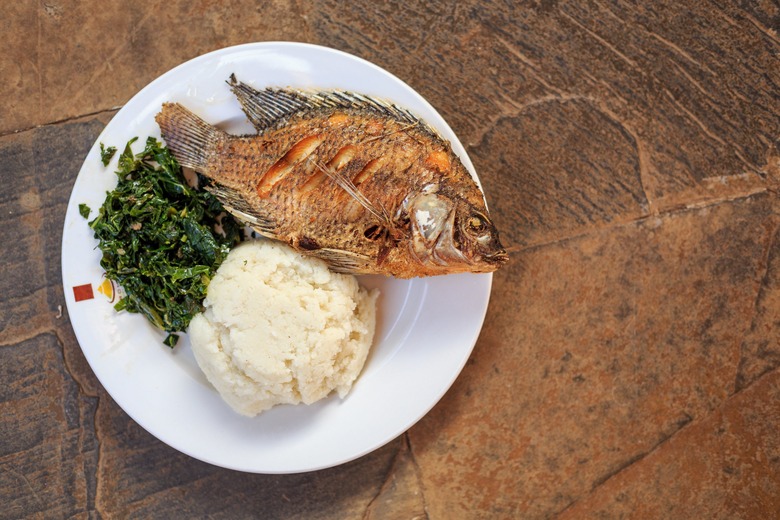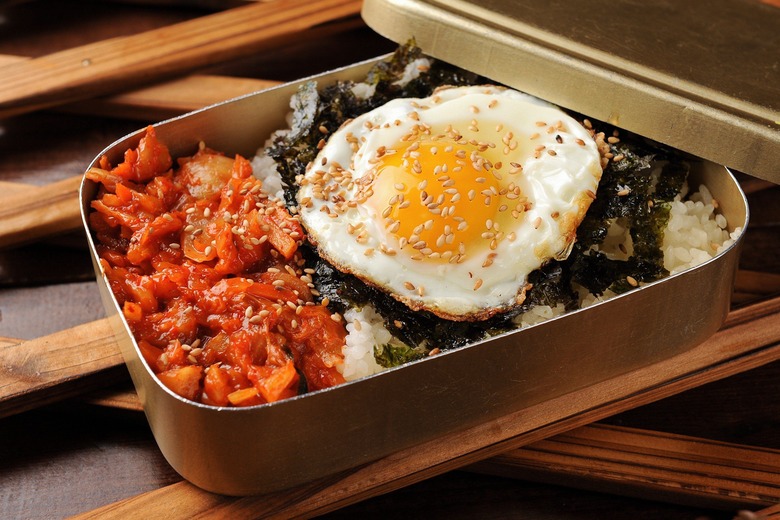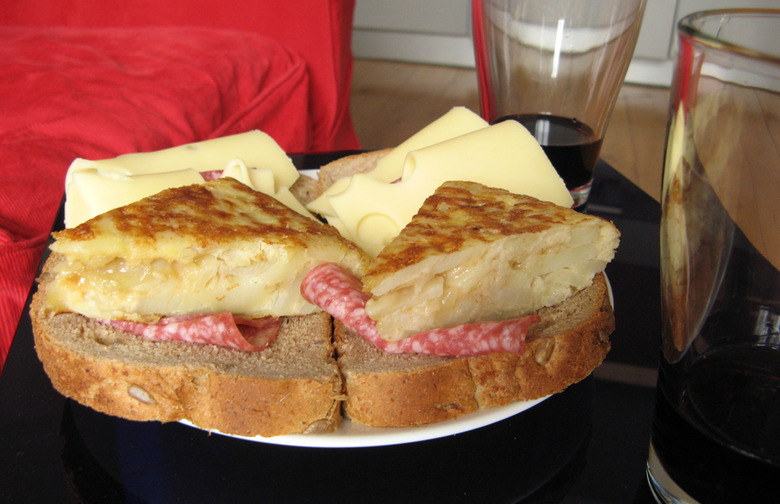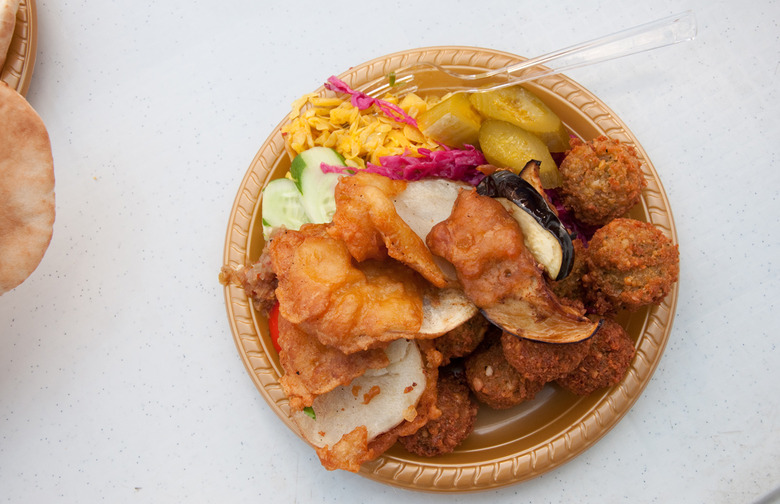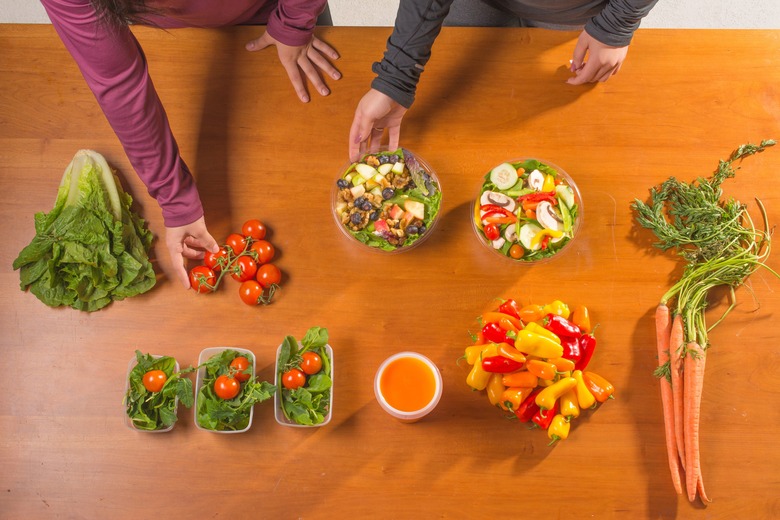What Office Lunches Look Like Around The World Gallery
For most office workers around the world, lunch is a meal eaten away from home. Although schedules and shifts can vary, people tend to eat breakfast before heading off to their jobs and dinner once they return. But lunch is an office thing.
During the work week, people typically either eat at their desks or at eateries near the office. The type of meal, however, varies from country to country (sometimes even from city to city). The most notable differences from place to place are the content of each dish, the amount of food eaten, and the length of the typical lunch break.
Some employees opt for grabbing a bite at a local restaurant, others get takeout for timing reasons, and many prefer the convenience and cost-efficiency associated with bringing a pre-made lunch. Some folks eat smaller meals on shorter breaks, while others opt for larger meals and longer breaks.
Many lunches consist of a single food item or a main dish with a side. But others have a well-balanced trio or quartet of different foods in one meal. Meat is generally included (but not always). A starch might be involved as part of the main dish (like in a sandwich or pasta dish) or as side, such as rice. The assorted fruits and vegetables depend on the region, too.
Something as simple and commonplace as lunch can be drastically different depending on where you are. Although every individual has his or her own preference, here's a look at average office lunches in various countries around the world.
Matt Sulem and Bianca Bahamondes contributed to this roundup.
Australia
Australians are more likely to eat their lunches in the office than folks in most other countries. Past studies have found that 80 percent of Aussie workers take lunch breaks of 30 minutes or less, 59 percent have worked while eating lunch, and 44 percent have skipped the meal altogether in order to keep working — meaning that most lunches (when they are actually eaten at all) consist of burgers, sandwiches, wraps, sausage rolls, and other quick and easy options.
Although workers will sometimes bring a bagged or boxed lunch from home for their short breaks, a recent study found that 22 percent of Aussies buy a lunch every day, 74 percent buy lunch at least once a week, and only 21 percent say they rarely or never buy.
Brazil
Although this is generally a list of things people around the world eat in offices, it would be remiss not to point out at least one country where workers rarely, if ever, stay in the office to eat lunch or eat it at their desks. In Brazil, food is just not consumed in places not meant for meals. In other words, Brazilians don't eat on the go (they usually don't drink coffee on the go either), and even if they're simply buying a sandwich or having a juice, Brazilians will stand around until they are finished — even at street food carts. Thus, lunch breaks are long and most employees opt to go out. Rice and beans are staples in the country, and are usually eaten with meat or eggs, salads, and farofa (toasted cassava flour).
China and Taiwan
In China and Taiwan, many workers use their lunch break to grab a biandang, or boxed lunch, to eat. Sold inexpensively at kiosks all over cities, the metal or Styrofoam boxes usually contain four separate compartments: one for rice and meat or eggs, and the other three for dumplings, dried bean curd, pickled ginger, or steamed vegetables.
It's often called a "Chinese bento box," but the word bento itself comes from biandang, which is a word dating to the Song Dynasty that means "convenient" or "convenience." Additionally, workers might also run to a self-service eatery (called a zizhu canting) where diners can take a meal to-go and pay by the weight.
They'll probably stop by a Starbucks soon, too, since one is set to open in China every day for the next five years.
India
Although the word "tiffin" generally refers to a snack in South India and Nepal, in other parts of India (including Mumbai) the word refers to lunch packed in a stainless-steel container.
The contents typically include rice, spicy meats, dried legumes, curry, vegetables, and a chapati flatbread. Interestingly, even though tiffins are homemade meals, they are often delivered from workers' homes to their offices (or other workplaces) by dabbawallahs or tiffin wallahs — delivery people who transport large numbers of tiffins at once.
Italy
A few years ago, a study in Italy found that 74.3 percent of people ate their lunch at home. How is this possible? Many people work in small towns or villages (and less than half of women work paying jobs), and other employees are given a lunch break (pausa pranzo) every day between 1:30 and 3 p.m., which sometimes extends as late as 3:30 or 4.
For those choosing to eat at the office, some companies or buildings contain a tavola calda, or "hot table," where workers line up for premade food like roasted meats and salads. Workers short on time might instead opt for pizza al taglio, where slices are cut into rectangular pieces, often with two equal-sized pieces that are sandwiched together for portability. Recently, the schiscetta (meaning "to press or pack together") has become popular for employees who wish to eat at their desks. It's basically the Italian form of a boxed lunch.
Japan
One of the most common types of lunches in Japan is the bento box. This refers to a snack or meal in a partitioned box, which consists of rice, fish or meat (like salmon sashimi or teriyaki chicken), and pickled or cooked vegetables (like edamame, carrots, or broccoli). Traditionally, bento boxes were made of wood, but these were later replaced with aluminum ones, and polystyrene is the common material today. Bentos are usually wrapped in a furoshiki, which is a cloth used to transport the lunch and keep it warm; it also doubles as a placemat.
Although the food can be prepared and packaged at home, bento boxes are also sold in restaurants, grocery and convenience stores, and even on trains. Because the meal setting can often change between professions, bento boxes generally contain food that is easily eaten by hand or with chopsticks.
Kenya
Another country that takes lunch as an opportunity to escape the office is Kenya. Most Kenyans don't have a large breakfast before heading to work because they have to leave so early to avoid traffic, but they make up for it with a large lunch. They take a full hour for lunch, flocking to restaurants in groups of three to eight people. Common lunch items include whole or fried fish, and some may have fish head or goat tripe stew.
Korea
Koreans have their own version of the Japanese bento box, called a dosirak. Although seemingly similar (they both come in a box), the food contained is obviously different, and is packaged and eaten differently as well. In Korea, in addition to rice, workers may choose options like shredded dried seaweed, lotus root, egg, and, of course kimchi, the popular side dish made of fermented cabbage, radish, scallion, or cucumber, seasoned with spices like brine, ginger, garlic, or a seafood sauce. Gochujang, a savory, spicy sauce made from red chiles, is often the condiment of choice. As opposed to its neatly portioned counterpart, dosiraks are picked up and vigorously shaken in order to mix up the contents prior to eating, and the resulting concoction is consumed with a spoon.
Norway
In Norway, office workers rarely go out to lunch. Instead, they bring meals from home that usually consist of fish, meat, eggs, or vegetables on slices of bread — not in traditional sandwich form, but in the open-faced style, called smørbrød. The drink of choice, curiously, is often milk. Fish is the national dish of choice at lunchtime, since Norway relies on both freshwater and saltwater fish for much of its food supply. Variations include boiled salmon, crayfish, mountain trout (often broiled and served with lemon), and fatty smoked eel. The most common side? Boiled potatoes with parsley and no butter.
United Arab Emirates
If there's one thing you'll probably never find in a lunch in the United Arab Emirates, it's pork, because of religious dietary laws. Instead, chicken, beef, lamb, and even camel are the meats of choice in Dubai and other cities. Speaking of the region's most famous city, food is quite expensive there, so many workers opt for cheaper street food selections (like falafel or musakhan — roasted chicken flatbread), sometimes every day. (Note: It is acceptable to haggle over prices at both street stands and brick-and-mortar restaurants in Dubai.) Since many employees work through lunch or eat at their desks, shawarma — spicy roasted and shaved meat wrapped in a pita — is the local fast food of choice.
United States
Although a sandwich and a piece of fruit will always be the classic American lunch, often with chips on the side, usually transported in a brown paper bag (or in a sweet lunchbox with a picture of Batman on it), Americans have begun to get more creative in recent years. Now workers at their desks will often be seen eating salad (or soup in colder months) or various types of pasta dishes. Since Americans often have long hours, long commutes, and otherwise busy schedules, make-ahead meals are becoming an increasingly popular option as well. In these cases, workers will prepare a large meal at home — usually over the weekend — and portion it out in portable lunches throughout the week. If not, though, they sometimes stray from the office to visit a great restaurant nearby.


